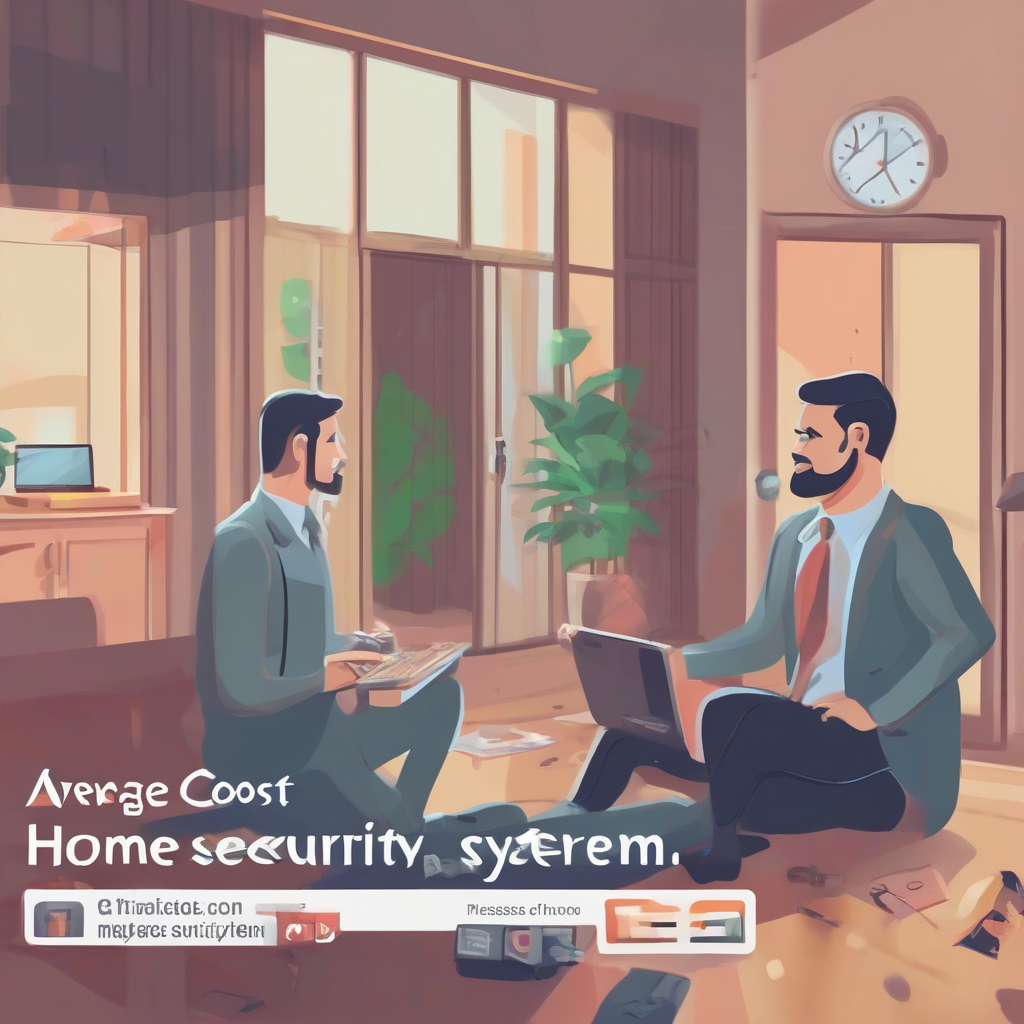Unraveling the Costs: A Comprehensive Guide to Home Security System Prices
The cost of a home security system can vary significantly depending on several factors. Understanding these factors is crucial to making an informed decision and choosing a system that fits your budget and security needs. This guide breaks down the average costs, influencing factors, and ways to save money on your home security investment.
Factors Affecting the Cost of a Home Security System
- Type of System: The type of system you choose drastically impacts the price. DIY systems are generally the most affordable upfront, while professionally monitored systems offer higher levels of protection but come with recurring monthly fees.
- Professional Monitoring: This service provides 24/7 surveillance and emergency dispatch. The monthly fee for this service can range from $30 to $60 or more, depending on the features included (e.g., cellular backup, video recording).
- Number of Sensors and Devices: The more sensors and devices you need (door/window sensors, motion detectors, cameras, keypads), the higher the initial cost will be. A basic system might include only a few sensors, while a comprehensive system could have dozens.
- Equipment Quality and Brand: High-end systems from well-known brands typically cost more upfront than budget-friendly options. However, the higher quality often translates to better performance, durability, and features.
- Installation Costs: Professional installation adds to the overall cost. DIY systems eliminate this expense, but might require some technical expertise.
- Contract Length and Terms: Some companies require long-term contracts, which can impact the overall cost. Shorter contracts or month-to-month plans might offer more flexibility but could be slightly more expensive per month.
- Additional Features: Advanced features like smart home integration, cellular backup, professional monitoring with video verification, and advanced analytics contribute to a higher price tag.
- Professional Monitoring Services: The level of professional monitoring service chosen will affect the monthly cost. Basic monitoring is cheaper, but more comprehensive services, such as those with video verification and immediate police dispatch, will be more expensive.
- Hidden Costs: Be aware of potential hidden costs, such as equipment replacement fees, early termination fees, or extra charges for additional sensors or devices later on.
Average Costs by System Type
DIY Home Security Systems
DIY systems represent a cost-effective entry point into home security. These systems typically range from $100 to $500 for the initial equipment purchase. However, keep in mind that professional monitoring is usually an extra cost if desired.
- Low-end DIY systems: These often focus on basic features like door/window sensors and motion detectors, with limited or no professional monitoring options. Expect to pay around $100-$200.
- Mid-range DIY systems: These often add features like smart home integration, more sensors, and possibly basic professional monitoring options. Costs are generally in the $200-$400 range.
- High-end DIY systems: These offer more advanced features, such as higher-resolution cameras, more comprehensive sensors, and advanced features such as smart home automation capabilities. The price can reach $400-$500 or more.
Professionally Installed and Monitored Systems
Professionally installed and monitored systems tend to be more expensive upfront but offer a greater level of security and peace of mind. The initial cost can range from $500 to $2,000 or more, depending on the size of the house, the number of sensors, and the features included. Monthly monitoring fees add to the overall cost, typically ranging from $30 to $60 per month.
- Basic professionally installed systems: These systems usually include a central control panel, some door/window sensors, and a motion detector. Expect to pay around $500 – $1000 for the initial installation and equipment.
- Advanced professionally installed systems: These systems include additional features such as multiple cameras, keypads, smart locks, and comprehensive professional monitoring services. The costs can reach $1000 – $2000 or more for installation and equipment.
Breaking Down the Costs: A Detailed Look
- Equipment Costs: This includes the cost of all the hardware, such as the control panel, sensors, cameras, keypads, and other devices. Prices vary significantly depending on the brand, quality, and features.
- Installation Costs: Professional installation typically ranges from $100 to $300 or more, depending on the complexity of the installation and the number of devices being installed.
- Monitoring Fees: Monthly monitoring fees are a recurring expense for professionally monitored systems. These fees typically range from $30 to $60 or more per month and depend on the level of service provided.
- Contract Terms: Consider the contract length and any early termination fees. Longer contracts might offer lower monthly rates, but could restrict flexibility.
- Additional Services: Some companies offer additional services, such as professional alarm response, 24/7 technical support, and remote system management. These services will add to your overall cost.
Tips for Saving Money on a Home Security System
- Consider a DIY System: DIY systems can significantly reduce upfront costs. If you’re comfortable with technology, this is a great way to save.
- Shop Around and Compare Prices: Don’t settle for the first quote you receive. Compare prices and features from several different providers.
- Negotiate Prices: Don’t hesitate to negotiate with security companies for better pricing, especially if you’re signing a long-term contract.
- Look for Bundles and Promotions: Many companies offer bundles that include multiple devices and services at a discounted price. Look out for special promotions or discounts.
- Start with a Basic System: You can always upgrade your system later if needed. Start with a basic system and add devices as your budget allows.
- Choose a System that Fits Your Needs: Avoid overspending on features you don’t need. Choose a system that addresses your specific security concerns.
- Check for Financing Options: Some companies offer financing options to make the initial purchase more affordable. Explore these options to make monthly payments manageable.
- Consider Insurance Discounts: Some insurance companies offer discounts for homes with professionally monitored security systems. This can significantly offset the cost of the system over time.
Conclusion
